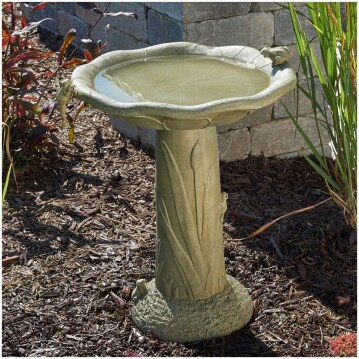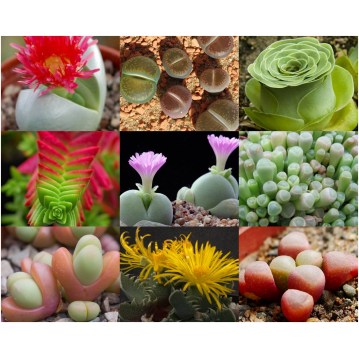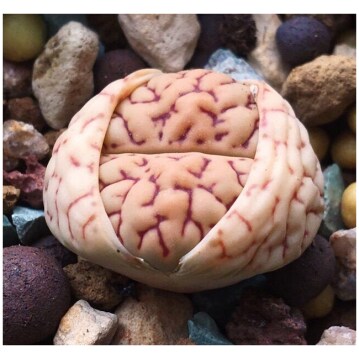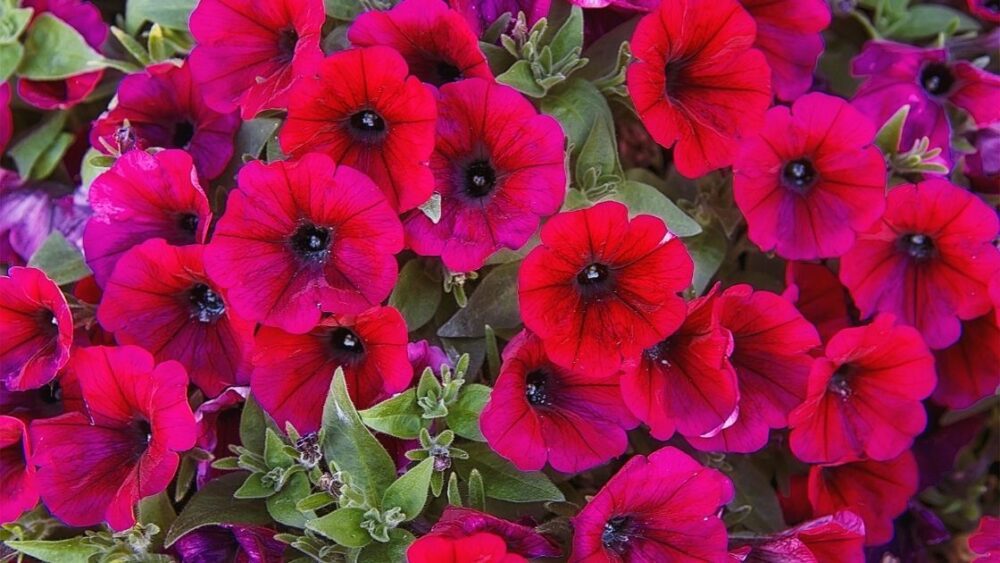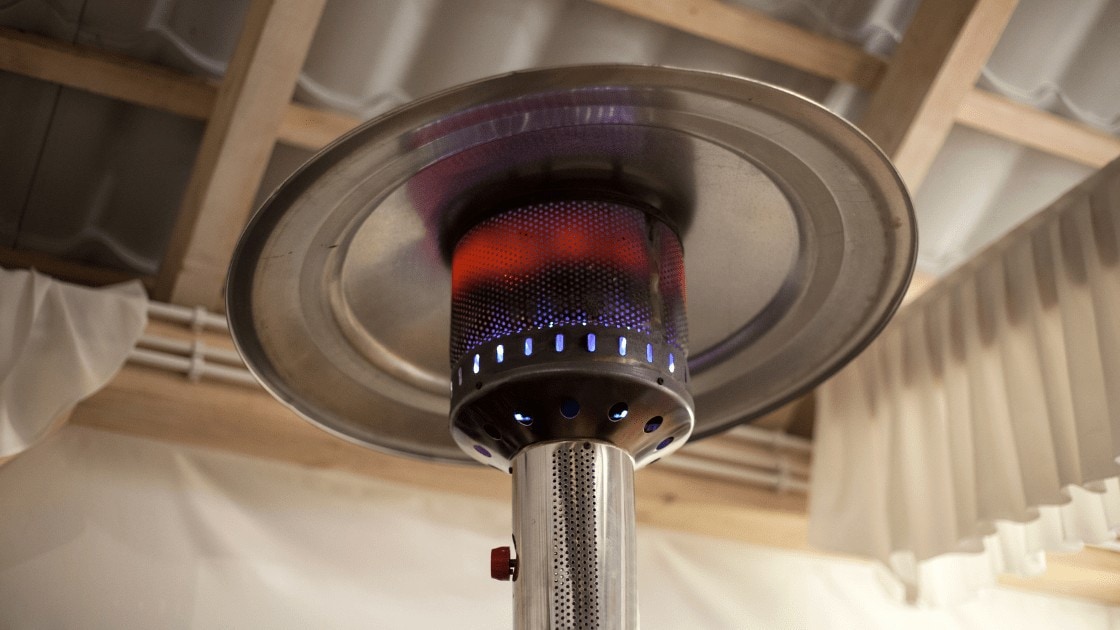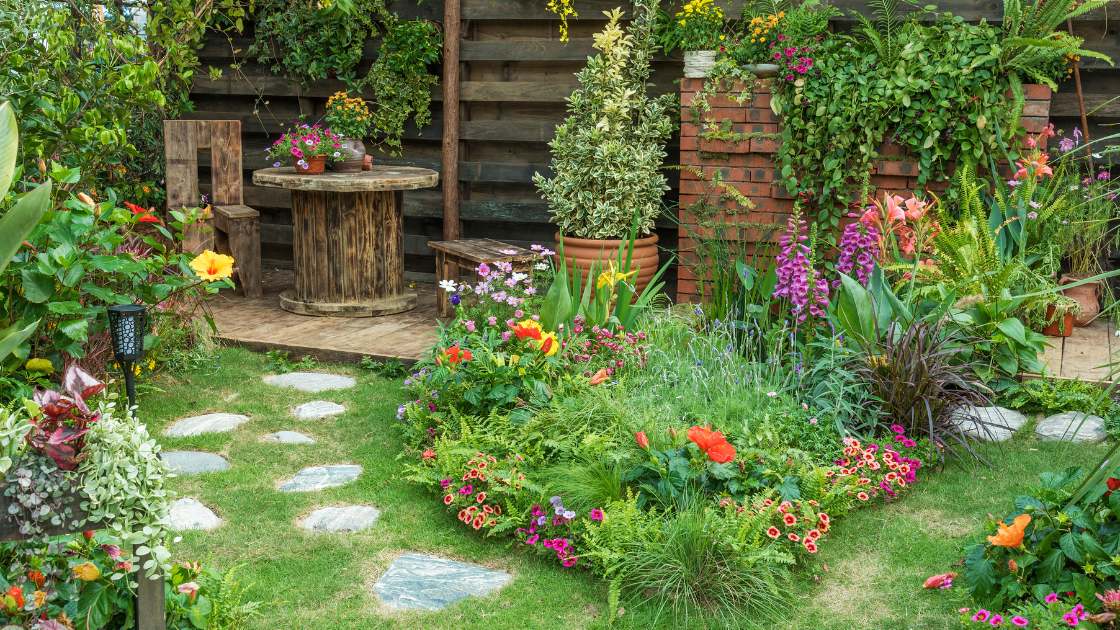
Lithops goes through both summer and winter dormancy – after the summer has ended, it usually grows a new pair of leaves and gets rid of the old pair which may look wrinkly and appear to be dying. Other than that, there is usually no signs of growth and too, will appear to be wrinkly. In the following, we will discuss the dormant period, and what you should do when your lithop has.
The winter is the most water-sensitive season and many growers give the plant zero water during this time, often for as long as 6 months. Lithops succulents are easy to care for and often do best when perpetually neglected. However, keeping a Lithops happy long-term (for more than 2 years) can be surprisingly challenging. This is mainly because of the annual cycle it goes through each year and the different amounts of water required during different seasons.
How to Tell When Lithops Has Become Dormant
The signs of dormancy in Lithops succulents can be subtle – in fact, some succulent growers refer to their dormancy as ‘semi-dormancy’, because there often aren’t any obvious signs, except lack of growth. Sometimes, Lithops will get wrinkly during the summer dormancy and refuse to plump up, despite watering.
Browse our Affiliate Products
Even though the period of summer dormancy can be pretty unremarkable, Lithops goes through an obvious change during the autumn – spring period – the leaves will shrivel up and appear to be dying, only to be replaced by new ones. This phenomenon will tell you that your lithops is happy and is going through it’s annual cycle correctly. After this leaf ‘recycling’, lithops will flower, after which it will enter summer dormancy and the process repeats every year.
For continued reading on lithops, check out this article.
Should You Water During The Summer Dormancy?
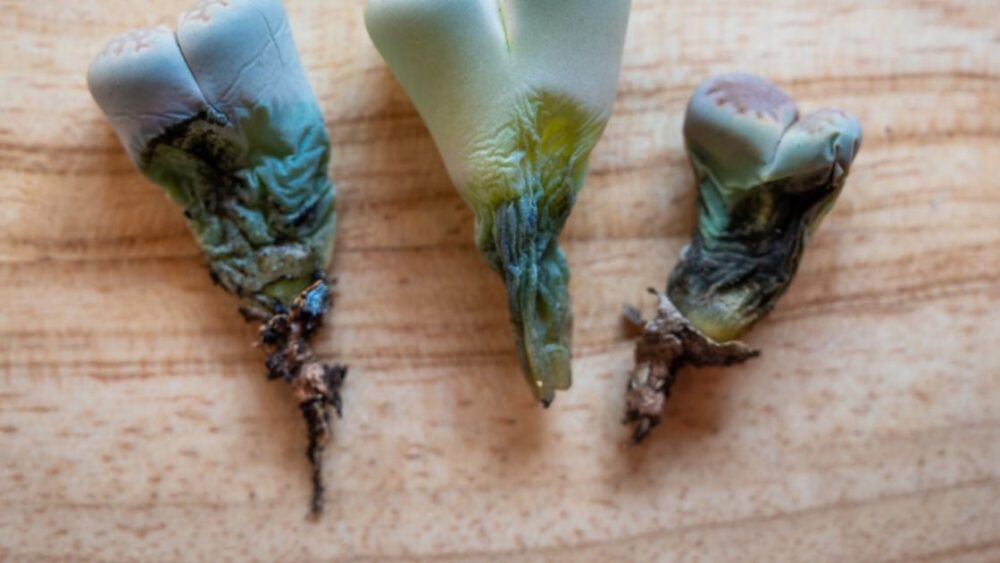
Excessive (or sometimes any) watering during the dormancy period can quickly lead to rotting problems that affect both the roots and the leaves. It can be very difficult for succulent enthusiasts to resist the urge to water abundantly during the hot summer months, but that’s what’s required.
During the winter, the water needs drop even more, to almost zero. The spring and autumn are the only periods when the succulent should receive water regularly (every 2-3 weeks).
If your lithop is to far gone, check out these other varieties.
Do Lithops Succulents Receive Rainfall During The Dormant Period In Their Natural Habitat?

According to most growers, Lithops shouldn’t be watered at all during the winter and only very sparingly during the summer. However, common sense will tell you that this doesn’t really happen with plants in nature.
Lithops comes from South Africa, where the average rainfall during the summer(around 25mm) is around 5 times lower compared to the winter and spring(around 120mm). However, the temperatures during the summer in SA are lower, instead of being higher like in the northern hemisphere. So, in its natural habitat, Lithops receives more rain during the hottest months and still some rain during the colder months.
This quickly tells you that the general rules for caring for Lithops plants are not meant to fully copy the conditions of its natural habitat. Instead, they are simply what succulent growers have determined works best. The reasons why Lithops is so prone to root rot while growing in household conditions remain somewhat of a mystery – it’s probably that the soil in pots dries up much more slowly compared to the outdoors and the root zone temperatures are much higher.
Another difference in nature is the much lower nighttime temperatures of around 55F, which can’t practically be achieved indoors during the summer months in most locations.
What Happens If The Dormancy Period Is Skipped?
It’s not completely clear what triggers the summer dormancy in Lithops and there probably won’t be any advantages to skipping it. Unlike other plants, which you may want to grow to a bigger size, lithops always stays small and always has only two leaves, which get replaced by new ones every year during the autumn.
Because Lithops comes from South Africa, which has relatively steady day lengths, it’s likely that the plant enters dormancy when just exposed to higher temperatures. This naturally occurs in most parts of the world as summer arrives. Some succulent lovers grow Lithops indoors under LED lighting, which gives the plant almost constant conditions throughout the year.
In that case, the succulent may flower sporadically and go through the leaf-replacement process at random times, sometimes more than once per year.
Does Lithops Experience Winter Dormancy?
During the winter, most growers notice reduced need for water, which is where the idea that the plant enters winter dormancy comes from. This dormancy has been called ‘semi-dormancy’ and may not be true dormancy – it may simply be caused by the natural lower temperatures during this period, which naturally reduce the water needs of the succulent.
It is often during the winter when Lithops starts replacing its old set of leaves, so in a sense this is the most active growth period of the plant. However, very little additional water is required for this leaf change and most of the water and nutrient transfer happens within the plant, from the old leaves to the new ones. This means that the roots are highly inactive during this period, which is probably why the plant becomes so sensitive to overwatering and so prone to root rot.
What Care Does Lithops Require During The Summer and Winter?
The annual cycle of Lithops is extremely important to learn – if you keep watering this succulent the same way throughout all the seasons, there is a high chance of root rot developing.
Here is a quick overview of the care requirements during different seasons:
- After flowering in the spring, Lithops will rest throughout the summer. It will then start growing a new set of leaves and the old ones will shrivel up. Reduce the watering frequency during this time to almost nothing. This period may last throughout most of the winter.
- When spring arrives, resume watering every two weeks and then reduce it again around June, as summer arrives. During this spring time, the new leaves will keep growing.
- During the summer, water only when signs of dehydration appear and the leaves get wrinkly and start shriveling. The ideal watering frequency during this period is highly individual and some people report watering as often as once a month.
Conclusion
The summer dormancy in Lithops is not something you’ll notice – the succulent will simply stop growing. At some point during the autumn or winter, the plant will start replacing its leaves, which is also a sign to start watering less. Some growers find that it’s best to give the plant zero water during the winter and water only once or twice during the whole summer. Water every two weeks during spring and autumn.



